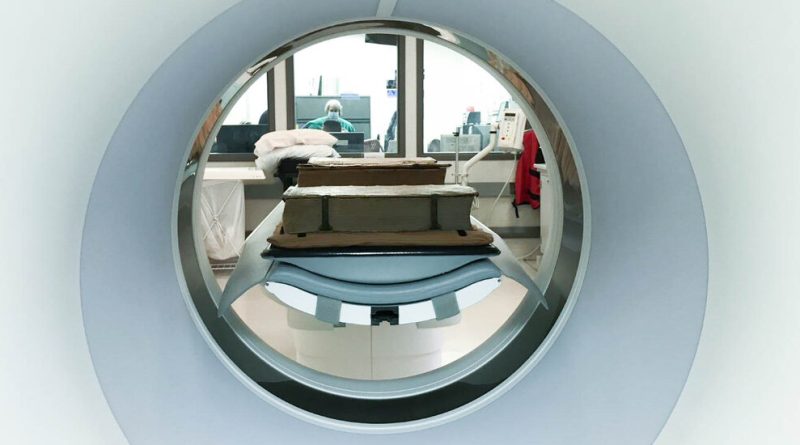A Hospital Visit Reveals Medieval Secrets Hidden in Books
[ad_1]
Even in medieval times, recycling was in vogue: Bits of parchment salvaged from older handwritten manuscripts were often used to reinforce other books. Using CT scanning, a team of researchers has now shown that those medieval leftovers hidden beneath some books’ covers can be seen. Studying these medieval binding fragments can help reveal how, when and where early books were assembled, and there’s always the tantalizing possibility of finding a previously unknown manuscript.
In Europe, books were reproduced by hand up until the middle of the 15th century. Known as manuscripts — the Latin root “manu” means “hand” — those written records were often works of art in their own right, with multiple colors of ink flowing across meticulously prepared sheets of calf, goat or sheep skin.
However, with the printing press becoming common in Europe in the 1450s there wasn’t much of a need for such manuscripts. But some book binders opted to reuse their parchment pages.
“They could use the older, more durable manuscript to help reinforce the structure of a new printed book,” said Eric Ensley, the curator of rare books and maps at the University of Iowa.
Binders would cut pieces of parchment — sometimes full pages, sometimes just thin strips — and glue them on places like a book’s spine. The book would then be covered, and most of those binding fragments would be hidden from view.
“There’s actually a whole library within a library in the form of these fragments,” said Joris Dik, a materials scientist who studies binding fragments at Delft University of Technology in the Netherlands and was not involved in the new study.
In recent decades, researchers have begun peering beneath book covers using noninvasive techniques to to find medieval binding fragments and read what’s written on them. But many of those techniques have limitations, which prompted Dr. Ensley and his colleagues to try CT scanning, the same kind available in a hospital. The technique’s three-dimensional view solves the focus problems that plagued other methods, and a scan can be completed in seconds rather than the hours previously required.
The team scanned a three-book set of “Historia animalium,” an encyclopedia of animals printed in the 16th century. One book would serve as a control, the researchers decided, because its cover was damaged and could be peeled back to reveal medieval binding fragments — featuring red and black ink — on the spine. The other two books were intact. However, the researchers hypothesized that their spines might also contain fragments because the books appeared to have been bound in the same workshop, said Katherine H. Tachau, a historian at the University of Iowa and a member of the research team.
Under the watchful eye of Giselle Simon, the conservator at the University of Iowa Libraries, the team placed the three books on the bed of a CT scanner in the lab of Eric Hoffman at the university’s Carver College of Medicine. The books fit with room to spare, and scanning all three took under a minute.
With Dr. Tachau, Dr. Ensley watched the hidden text of some of the binding fragments being revealed on the scanner’s screen.
“We both leaned in and started reading the Latin together,” he said. “It was a goose bumps moment.”
Many of the medieval binding fragments in the “Historia animalium” came from a Latin Bible dating to the 11th or 12th century, the team reported in April in the journal Heritage Science.
When the researchers analyzed the CT scans of their control book, they found that letters written in red ink were most pronounced in the images. Darker inks, however, did not show up as clearly. The different chemicals in the inks affect how they absorb X-rays.
But by varying the energy of X-rays emitted by a CT scanner, it might be possible to better detect black inks in future studies, Dr. Ensley and his collaborators hypothesize.
The fragments the team uncovered will be ultimately digitized in Fragmentarium, an online repository of more than 4,500 medieval binding fragments. The archive is a way to disseminate the information contained in these hidden pieces of history, said William Duba, a historian at the University of Fribourg in Switzerland who coordinates Fragmentarium.
“The spines of books are hiding treasures,” he said.
